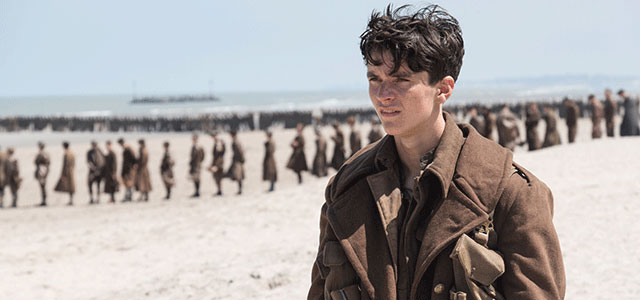
1. Casablanca (1942)
One of the most quotable Hollywood movies ever made pairs icons Humphrey Bogart and Ingrid Bergman in a story about love torn asunder by the spectre of war.
The looming threat of World War II leads to that famously bittersweet ending, and also informs the rich tapestry of supporting characters, with whom Bogart's Rick, a cafe owner, interacts. These range from Czech resistance leader Victor Laszlo (Paul Henreid) to Captain Louis Renault (Claude Rains), whose friendship with Rick acts as the curtain call.
2. A Matter of Life and Death (1946)
Pioneering British filmmakers Powell and Pressburger were renowned for their diversity of subjects, from nuns going insane in a convent (Black Narcissus) to ballet (The Red Shoes). They also addressed the spectre of World War II, famously in The Life and Death of Colonel Blimp, and A Matter of Life and Death. David Niven is the fighter pilot who unexpectedly survives an air crash and subsequently causes a diplomatic nightmare in heaven.
Cleverly juxtaposing the vibrant colour of Earthbound life with the mundane black and white bureaucracy of the afterlife, it's both an anti-war statement and a beautiful meditation on humanity.
3. The Dam Busters (1955)
Few British movies invite a sense of patriotic spirit quite like The Dam Busters. Part of it is the spirited, unforgettable theme music by Eric Coates, a brilliant encapsulation of heroism. Another reason is the understated, stiff-upper-lipped bravado of its excellent cast, including Richard Todd and Michael Redgrave.
But the real reason for the film's impact is its authentically detailed reconstruction of a truly astonishing World War II mission. The Dam Busters focuses on the development of the so-called 'bouncing bomb', deployed to destroy a host of dams in Nazi Germany via Operation Chastise. The conviction of the effects and the performances, and the focus on the sheer professionalism of the pilots, ensures the film's status as a war classic.
4. From Here to Eternity (1957)
James Jones' novel informs this sweeping story of romance in the time of war. Director Fred Zinneman assembles a heavyweight cast, led by Burt Lancaster as First Sergeant Milton Warden, who finds himself stationed on Pearl Harbour in the months preceding the Japanese attack.
Lancaster enjoys a famous Hawaiian beachside kiss with Deborah Kerr's Karen Holmes, the waves crashing over both of them. (This was later memorably spoofed in Airplane!) The rest of the cast reads like a who's who of Hollywood giants: Frank Sinatra, Donna Reed and Ernest Borgnine all feature.
5. Reach for the Sky (1956)
The inspiring true story of British pilot Douglas Bader informs moving drama Reach for the Sky. RAF veteran Bader lost both of his legs in a tragic accident, but defied his doctors to learn to walk on fake limbs. Later on, he went on to marry his sweetheart, but was later shot down and incarcerated in notorious Nazi prison Colditz.
In the movie, Bader is played with resolve and steel by Kenneth More, and it went on to win a BAFTA for Best British Film. Director Lewis Gilbert, meanwhile, would become a James Bond director of repute with the likes of You Only Live Twice and The Spy Who Loved Me.
6. The Bridge on the River Kwai (1957)
Before he made the definitive desert epic Lawrence of Arabia, British filmmaker David Lean tackled the ugliness of British POW camps in the Far East. Based on Pierre Boulle's book, The Bridge on the River Kwai, like The Dam Busters before it, is propelled by a somewhat whimsical theme tune, in this case the 'Colonel Bogey March'.
But the film is a sombre, unblinking look at the corruption of power, primarily seen through the eyes of Alec Guinness' fracturing Lieutenant Colonel Nicholson. When the deluded Nicholson realises the horrible irony of his command, that of extending the Burma Railway to assist the Japanese, it builds to a tragic conclusion that leaves us stunned.
7. The Longest Day (1962)
One of the first epic World War II movies, The Longest Day sprawls to an impressive 178 minutes. It took three directors and the backing of Hollywood mogul Darryl F. Zanuck to bring this adaptation of Cornelius Ryan's book to the big screen, and it gets a hefty cast to match.
The drama is centred around the D-Day landings in Normandy in 1944, which would later inform the opening sequence of Steven Spielberg's Saving Private Ryan. The assembled cast of Hollywood heavyweights includes John Wayne, Robert Mitchum, Richard Burton, Kenneth More, Sean Connery, Rod Steiger and many more, all of whom do the history justice.
8. The Great Escape (1963)
Still, if we're talking World War II movies with iconic themes, they don't come more so than The Great Escape. Elmer Bernstein's rousing march is, by turns, victorious and also mischievous, suggesting the witty level of subterfuge on display in the movie itself.
The film surely needs no introduction. Based on a real-life escape from a POW camp in Silesia, the movie assembles one of the best casts of all time to pull us into the drama. An immediately iconic Steve McQueen is the Cooler King, whose attempted escape on a bike is one of the most famous moments in cinema. Richard Attenborough, Donald Pleasence, James Garner and James Coburn are among the others set to make the great escape.
9. Where Eagles Dare (1968)
Not all WWII movies are pitched at the serious, factual end of the spectrum. This boys' own adventure is based on the rip-roaring novel of the same name by Alistair MacLean, pairing Richard Burton with Clint Eastwood as they go up against the might of Nazi Germany.
When a group of Allied soldiers launch an assault on a German castle fortress to rescue a kidnapped comrade, the situation turns out to be more complicated than expected. To the sound of Ron Goodwin's portentous score, the film deploys many gripping action sequences, including a cable car fight that set new standards of stuntwork in Hollywood.
10. A Bridge Too Far (1977)
Like The Longest Day before it, A Bridge Too Far utilises a bum-numbing running time and a mighty cast to pull us into one of WWII's most pivotal conflicts. Directed by Richard Attenborough, the film dramatises Operation Market Garden, centred in and around Arnhem in the Netherlands.
The ambitiously mounted operation was, notoriously, a disaster, and Attenborough's movie is an exhaustive look at how Market Garden failed. Michael Caine, Sean Connery, Robert Redford, Laurence Olivier, Elliot Gould and more all star in this account of an embarrassing Allied misfire.
11. The Big Red One (1980)
Director Sam Fuller was famous for his full-throttle excursions into genre cinema, like the overcooked asylum movie Shock Corridor. It was, therefore, no surprise that The Big Red One turned out to be a characteristically full-blooded and passionate look at WWII conflict, based on the director's own experiences.
The film's curious title is the name of a squad of infantrymen who traverse the European arena of conflict. Lee Marvin, Mark Hamill and Robert Carradine are among the actors putting a human face on the tragic cost of war.
12. Das Boot (1981)
Movies set during WWII have occupied air, land and sea. When it comes to submarine films, the definitive text has to be Das Boot, directed by Wolfgang Petersen, and treated to both theatrical and extended TV presentations.
The movie is adapted from Lothar G. Buchheim's novel, and proved a marvel of authenticity. It was, for its time, a brave movie to make, fashioning sympathetic portrayals out of a Nazi U-boat crew as they're pursued through the Atlantic by various Allied craft. The claustrophobic interiors, prowled by impressively roving camerawork, give a sense of chilling verisimilitude, not least when the crew is attempting to stay quiet and alive during a depth charge assault.
13. Come and See (1985)
Many war movies attempt to fashion an audience-friendly narrative out of a particular conflict. But Elim Klimov's devastating Come and See never gives the viewer an easy way out. Instead, it fashions a nightmarish fairy tale of discordant sound and visuals, accurately depicting Nazi horrors on the Belorussian front during the final days of WWII.
Russian director Klimov hypnotised young actor Aleksey Kravchenko so he would give an authentically dazed reaction to the terrors that unfold. The film unspools through the eyes of Kravchencko's character Flyora, with the final destruction of a village by Nazi forces one of the most horrifying sequences in any war film.
14. Hope & Glory (1987)
Here's a war movie of a distinctly more nostalgic and optimistic variety, based on director John Boorman's own experiences. The film recounts the Blitz as seen through the eyes of one family, with young boy Billy (Sebastian Rice-Edwards) acting as the stand-in for the director.
Billy's journey is one that's marked with equal amounts freewheeling joy and devastation, as his essential innocence contrasts with the sombre realities of Britain during wartime. The movie was ultimately nominated for five Oscars, including Best Picture and Best Director for Boorman.
15. Grave of the Fireflies (1988)
One of the great strengths of Japanese animation powerhouse Studio Ghibli is its willingness to engage with grown-up subject matter. And Ghibli's films don't come more sobering or upsetting than this pointedly anti-war drama, which explores the devastating cost to families, in particular innocent young children.
Directed by the late Isao Takahata (who would later helm The Tale of the Princess Kaguya for Ghibli), the film focuses on a brother and sister navigating the spectre of the atomic threat in Kobe in 1945. The film is based on the autobiographical story of the same name by Akiyuki Nosaka, and ultimately ventures into the kind of devastating areas many animated films wouldn't dare to go near.
16. Schindler's List (1993)
Prior to Schindler's List, director Steven Spielberg had been pigeonholed as to go-to-guy for populist blockbusters. This was in spite of his occasional series dramas such as The Colour Purple and Empire of the Sun. Schindler's List, however, won Spielberg significant artistic credibility and Oscar success, helping him gravitate into the realm of mature, grown-up director.
Shot in monochrome black and white by Janusz Kaminski, the film explores industrialist Oskar Schindler's daring rescue of more than 1000 Jews from the Nazi concentration camps. Spielberg's fierce restraint unlocked a far more pragmatic, observant side to him as a filmmaker, aided by some fine performances. Liam Neeson steadily replaces ruthlessness with compassion in his depiction of Schindler, with Ralph Fiennes is cruelty incarnate as commandant Amon Goeth.
17. Saving Private Ryan (1998)
If Schindler's List is considered one of the defining movies of the Jewish WWII experience, then Steven Spielberg's Saving Private Ryan revolutionised the cinematic approach to battle sequences. The opening of his harrowing wartime drama takes place during the Omaha beach landings, with the desaturated colour palette and handheld camera deliberately aping war documentary footage.
It's a visceral and terrifying opening that the rest of the film can't quite live up to. Nevertheless, there are strengths, including the always engrossing Tom Hanks as the leader of a group of soldiers. Their mission; to behind enemy lines and find one man whose brothers have all been killed in conflict. The end result won Spielberg his second Oscar for Best Director.
18. The Thin Red Line (1998)
It's fascinating when two movies based around the same theme appear in the same year. Terrence Malick's The Thin Red Line is, like Saving Private Ryan, an intimate look at the psychological and physical horrors of WWII conflict. But the aesthetic of the two films couldn't be more different.
If Spielberg goes for the gut punch, then Malick's approach is, characteristically, more philosophical and opaque. His study of the Guadalcanal conflict is as much a story of nature being torn apart by war as it is a story of human sacrifice. Impressionistic editing and hushed voiceover create a thoughtful atmosphere that is very much in-keeping with Malick's earlier movies such as Badlands.
19. The Pianist (2002)
Ostracised from Hollywood since the 1970s, director Roman Polanski won his first Oscar for Best Director for this stark WWII drama. The Pianist is based on the true story of Władysław Szpilman, who chronicled his attempts to stay alive in war-torn Warsaw.
Szpilman is played with conviction and urgency by Adrien Brody, who also won an Oscar for the film. Somewhat ironically, Brody's role in the earlier The Thin Red Line was minimised after Terrence Malick reshaped the movie in the editing room. Fortunately, Polanski's moving drama allows the actor to demonstrate his talents.
20. Downfall (2004)
Any movie that dares to take an intimate, decidedly pragmatic look at Nazi leader Adolf Hitler is a bold one. So goes Oliver Hirschbiegel's Downfall, which takes as its basis Hitler's final days in his Berlin bunker, as his wartime plans come crashing down around his ears.
In the central role, Swiss actor Bruno Ganz is a force of nature, ranting and raving while giving a profound sense of the deeply flawed human beneath the Nazi iconography. Hitler is a figure who has so often been treated to caricature, deservedly so; Ganz' portrayal is, however, much braver and more controversial than that, suggesting one man paying dearly for his mistakes.
21. Letters from Iwo Jima (2006)
Clint Eastwood split his examination of WWII across two films. In 2005, he made Flags of Our Fathers, which explored the 1945 battle of Iwo Jima from the American perspective. In 2006, he delivered the movie told from the Japanese point of view, and it's arguably the superior film, leaving patriotism at the door to explore themes of honour in the face of horrendous conflict.
Ken Watanabe is haunting and brilliant as General Tadamichi Kuribayashi, the man facing appalling odds during one of the bloodiest battles of the war. The movie was shot back to back with Flags of Our Fathers and yet stands on its own as a sensitive, illuminating exploration of a non-American ideology.
22. Inglourious Basterds (2009)
One doesn't come to a Quentin Tarantino movie for sobriety or subtlety. The prospect of the Pulp Fiction director making a WWII movie was at the time, and for many still is, highly contentious, but then again Tarantino revels in shocking the audience.
True to form, Inglourious Basterds is no straightforward wartime epic but a chaptered, multi-stranded odyssey that interweaves elements of the exploitation B-movie and the Spaghetti Western. In the pivotal role of SS Colonel Hans Landa (aka the 'Jew Hunter'), Christoph Waltz is an Oscar-winning sensation, by turns cunning, horrific and highly charismatic. Michael Fassbender also makes a strong impression in an early role as undercover Lt. Archie Hicox.
23. Son of Saul (2015)
The WWII drama is so pervasive, it can be a challenge to find new, innovative ways of depicting the conflict. In 2015, Hungarian director Laszlo Nemes stepped forward with his astonishing feature film debut Son of Saul, which focuses on the Sonderkommando, a group of Jewish prisoners responsible for cleaning the Nazi gas chambers.
The film takes place in Auschwitz and is shot almost entirely in either close-up or medium close-up, remaining fixed to the face of central character Saul (Geza Rohrig). This not only allows us to see how the brutality of the situation has rendered his face a stoic mask, but it also leaves us to imagine what horrors are hovering out of focus around the edge of the frame. In doing so, the movie avoids being exploitative, fashioning a suitably harrowing yet admirably humane portrayal of one of mankind's darkest hours.
24. Dunkirk (2017)
Christopher Nolan has always been a fan of time sculpture, whether it's the backwards-forwards structure of Memento, or the multiple layers of consciousness in Inception. With Dunkirk, he puts the theme in service of the WWII conflict, specifically, the evacuation of Allied soldiers from Dunkirk in 1944.
The film plays out across three different timelines on land, sea and air, ranging from Fionn Whitehead's imperilled young soldier to Tom Hardy's brave fighter pilot. Yet for all the thunderously well-staged physical sequences, shot with IMAX cameras for added immersion, Nolan is out to make a wider philosophical and emotional point.
Namely, that heroism and valour transcend all notion of time, regardless of whether one spends a week on the beach avoiding the Stuka bombers, or an hour in the air prior to being shot down. In the end, sacrifice and bravery aren't relative to the amount of time one spends exhibiting them. Instead, these qualities unconsciously bind us all together, regardless of varying individual perspectives.
25. Jojo Rabbit (2019)
Ubiquitous Kiwi director Taika Waititi loosely adapts Christine Leunens' novel Caging Skies in this irreverent World War II satire. Roman Griffin Davis is young Jojo 'Rabbit' Betzler, whose imaginary friend is none other than Hitler himself (Waititi). But when Jojo discovers his mother Rosie (Scarlett Johansson) is sheltering young Jew Elsa (Thomasin McKenzie) in their attic, he experiences a crisis of conscience.
Mixing Waititi's characteristically offbeat humour with darker insights into the emotional cost of war, there's no denying that Jojo Rabbit attempts a tricky balancing act. Controversial though the movie was, it got Waititi his first-ever Oscar, for Best Adapted Screenplay.
What is your favourite World War II movie of all time? Let us know @Cineworld.
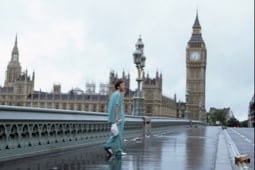

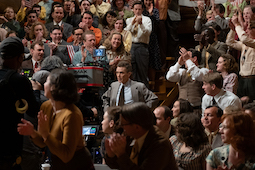
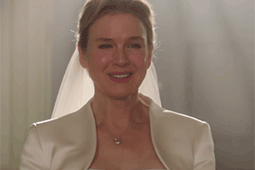
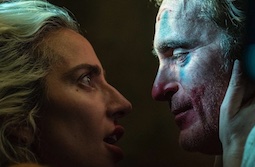
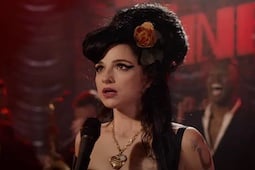
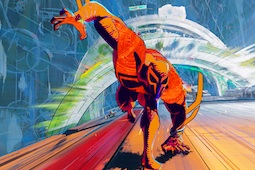
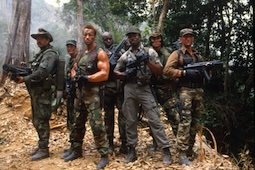
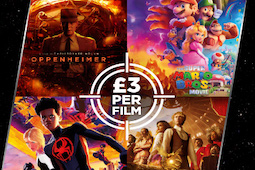
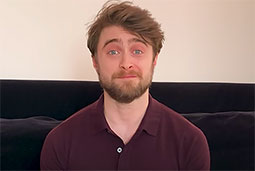
.jpg)
.jpg)

.jpg)
.png)



